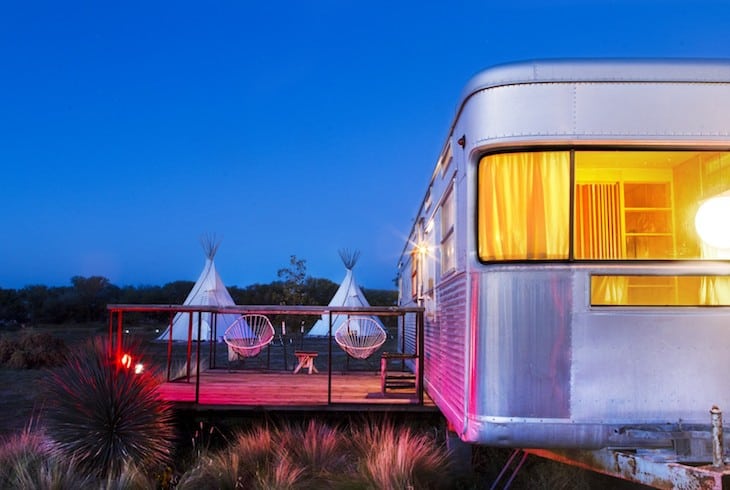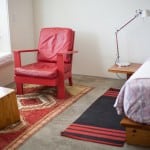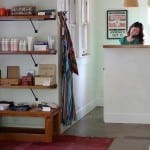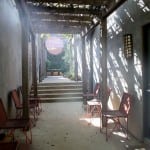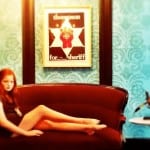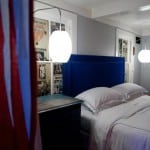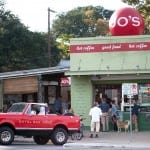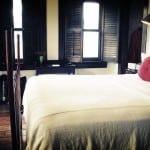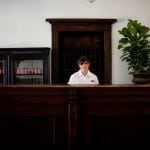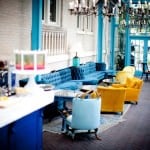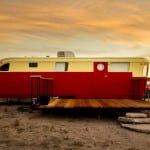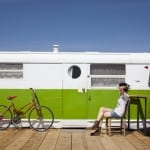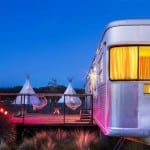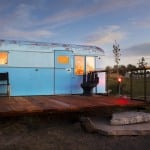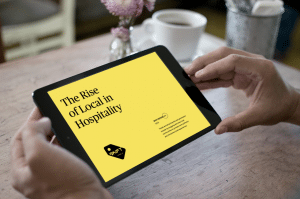Skift Take
How a thoughtful Texan hotelier was able to create one of the most innovative hotel groups in America is a testament to understanding the role hotels can play in inspiring guests to reconnect with themselves.
- Hotel San Jose, Austin
- Hotel San Jose, Austin
- Hotel San Jose, Austin
- Hotel San Jose lobby, Austin
- Hotel San Jose, Austin
- Hotel Saint Cecilia, Austin
- Hotel Saint Cecilia, Austin
- Hotel Saint Cecilia, Austin
- Jo’s Hot Coffee & Good Food cafe, Austin
- Hotel Havana, San Antonio
- Hotel Havana, San Antonio
- Hotel Havana, San Antonio
- Hotel Havana, San Antonio
- Speakeasy at Hotel Havana, San Antonio
- Ocho restaurant/bar, Hotel Havana, San Antonio
- Ocho restaurant/bar, Hotel Havana, San Antonio
- El Cosmico, Marfa, Texas
- El Cosmico, Marfa, Texas
- El Cosmico, Marfa, Texas
- El Cosmico, Marfa, Texas
The most unique hotel marketing copywriting in existence might be the Mañanifesto of El Cosmico in Marfa, Texas (pop. 2,121). It’s much more than a mission statement about a hotel, although El Cosmico isn’t really a hotel. The treatise is an ode to a more mature, aware and nuanced life, in the same way that Apple’s “Think Different” or Nike’s “Just Do It” campaigns promote a life vision versus merely a consumer brand.
Part of the Bunkhouse Group, El Cosmico consists of renovated vintage trailers, teepees and yurts surrounding a communal cookhouse for dining and lounging. Guests can also bring a tent, like this group of college girls did. You have to really want to get to El Cosmico because it’s a 2.5-hour drive across the West Texas badlands east of El Paso.
Here’s the opening graph of the Mañanifesto:
If you have been to Marfa or places like it, you may have experienced Mañana. Mañana cannot generally be found in cities with more than one stoplight. Mañana doesn’t care about email or normal hours of operation. Mañana recognizes that we can’t all have everything we want at any given moment, like peaches in January or cell phone reception in West Texas. Mañana is the anticipation that it might happen today, and it might just as likely not, and really either way it’s not that big of a deal. The key to Mañana lies somewhere in the unspecified future. It holds the great promise of hope.
The other three Bunkhouse properties are decidedly more urbane and upscale, yet they possess the same laid-back ambience and retro Texan spirit. Liz Lambert is the mercurial owner who designed and developed Hotel San Jose and Hotel Saint Cecilia in Austin, and Hotel Havana in San Antonio. The ex-Manhattan prosecutor also owns three Jo’s Hot Coffee & Good Food cafes in Austin.
It is difficult to define, exactly, the Bunkhouse experience. The soft-spoken Lambert isn’t quite sure either. Speaking with her, you get the sense that she came up with the original idea for each property, inspired by a combination of romantic nostalgia and urban design scholarship, and then the hotels kind of evolved on their own after that.
For example, Hotel San Jose is minimalist with concrete floors and white walls, but not stark minimalist. It feels like a 1970s condo complex with thick gardens, bare Ivy League room decor, and crisp YMCA-style bathrooms, owned by someone with subdued proclivities and deft taste in late 20th century Modernism.
Lambert compares her hotels to Ace and Joie de Vivre, except they’re less cosmopolitan and more deconstructed, but even then she’s reticent to commit to any firm, holistic definition of the brand. Like any inspired piece of art or design, the Bunkhouse experience is temporal and open to individual interpretation.
So instead, I asked Lambert for the best feedback from previous guests, and let them define Bunkhouse.
“Years ago, somebody wrote a comment card at San Jose that said: ‘This is the most fucking expensive garage I’ve ever stayed in,'” she answered. “I’ve always loved that one.”
“I think our guests come away inspired,” said Lambert. “It’s a real chance for people to kind of get out of their day to day life, and you know, travel someplace where there’s less clutter and really beautiful gardens. I think it gives you a second to step aside.”
The idea of “guests coming away inspired” nails it. That, at last, is the Bunkhouse mission. Lambert is almost sure of it.
The Best Little Hotel Group in Texas
Hotel Saint Cecilia has a quiet, somewhat decadent rock ‘n roll theme, almost like a halfway house for recovering rock stars. As Lambert recalls, the hotel design was initially sparked by an old black and white photo from the 1970s of possibly Mick Jagger looking all raggedy with a chauffeur polishing a Bentley behind him.
I asked Lambert how she comes up with her design visions.
“I don’t know, who knows?” she laughed. “What we try to do is respond to place. I think hotels can be a lot like storytelling, in that once you sort of start making design and programming decisions based on a clear idea of the narrative, then it becomes really obvious what the china should be, what the scent should be, and the linen should look like. It’s all driven by that sense of story.”
Lambert explains that a powerful muse for her is the work of architectural writer and Berkeley professor Christopher Alexander, who pioneered the idea back in the 1960s that anyone can, and should, design and co-create their own houses and communities.
“I’m really a big admirer of him, he wrote about place-making and he wrote a famous book called A Pattern Language, which is about how we build communities,” she said. “He talks about sort of a Taoist quality without a name that runs through the places where we feel most comfortable, and the places where you feel most whole, or most kind of at ease. And they all tend to have this quality that you can’t really particularly name but it just feels right.”
That sums up the riverfront Hotel Havana in San Antonio. Originally built in 1914, the Mediterranean Revival building feels like a set design used in The Sting, with rooms trimmed out in post-war furnishings and lots of dark leather and wood. The bubblegum-hued Smeg fridges remind you what century you’re in.
A couple years ago while attending a conference in downtown San Antonio, I hailed a cab to Hotel Havana. The driver had never heard of it.
You have to admire a 27-room hotel with two bars. The basement speakeasy is very dark with candles barely illuminating the red velvet sofas and vintage Cuban film posters. A bit of hipster heaven down there. Upstairs, the dollhouse-like Ocho restaurant/bar with blue velvet sofas below large chandeliers lives inside a long glass atrium overlooking the river.
Ocho is the kind of place where you fall into easy conversation with local architecture students about the bones of Hotel Havana, listed on the National Register of Historic Places. TripAdvisor reviewers call the place “sensually exotic,” while mentioning the glicerine soap that smells like fresh grapefruit, and Mexican-produced Coca-Cola made with real sugar stocked inside the Smeg fridges.
Another reviewer wrote, “We liked it but it’s a little bit different.”
Exactly.
‘We the People of El Cosmico’
Developed on what was once a horse pasture, El Cosmico is becoming a bucket-list, migratory soul ride for a certain type of traveler, or seeker, coming in from all over the world. It’s not cheap, either. It costs $150 per night ($170 on weekends) to book a 35-foot, 1953 Vagabond trailer outfitted with a wood desk and chair, queen bed, indoor shower and cedar deck. The 18-foot Little Pinky is only $110 if you’re cool with a private outdoor shower.
“So why do people love El Cosmico so much?” I asked Lambert.
“I think it has a lot to do with the myth of the American West, the adventurer, the traveler, you know? You’re going to put on your boots and you really need them because there might be scorpions and snakes, and you’re going to trump across the desert, and there’s going to be skies full of stars. It really takes you away from your normal existence, and I think you listen to yourself in a different way when you’re in a place like that.”
Obvious next question: “How did you ever come up with the idea for El Cosmico?”
“I kind of did El Cosmico as a response to just not being in a motel or hotel, and trying to be a little closer to the land. Another reason is I didn’t have financing to start a hotel, so the easiest thing to do was start putting up tents and rehabbing trailers, so we could always add another room whenever, you know, when we got around to it.”
Lambert and I talked about Rural Studio, which is an Auburn University architecture school program in tiny Newbern, Alabama. Senior students do a residency there to build avant-garde homes and public facilities using recycled materials ranging from old tires to carpet remnants.
It is one of the most innovative architecture programs in the country, and one of its alumni, Jack Sanders of Design Build Adventure in Austin, leads design and construction events at El Cosmico. Lambert’s partnership with Sanders goes back to her interest in place-making and Christopher Alexander, and each event supports a different community organization.
“They’re really popular,” said Lambert. “I think if there’s any thread running through that stuff, it’s a sort of Ralph Waldo Emerson focus on self-reliance.”
EL Cosmico also hosts cook outs with big name chefs from Austin, and the Trans-Pecos Festival of Music & Love.
I told Liz I read El Cosmico’s Mañanifesto about once a month.
“Isn’t it great?” she enthused, mentioning its author, Isadora McKeon, communication director at Bunkhouse. “Have you seen the new one, Dolce Far Niente (Do Sweet Nothing)? It’s pretty good too.”
I hadn’t. It reads, in part:
We are aware of a fascination with doing nothing that burns among us like a small rebellion inside our workweek souls. It has tangible representations in the hammock, the smell of last night’s campfire smoke in your jean jacket, a rucksack. It has been named: dolce far niente, siesta, walkabout, bum… It is a declaration of total freedom to say ‘Now, I do nothing for a little while.’
We the people of El Cosmico would like to believe that we can achieve this occasional freedom together….
Greg Oates covers hospitality trends and next generation hotels. He has participated in 1,000+ hotel site inspections in over 50 countries.
Have a confidential tip for Skift? Get in touch
Tags: bunkhouse group, texas
